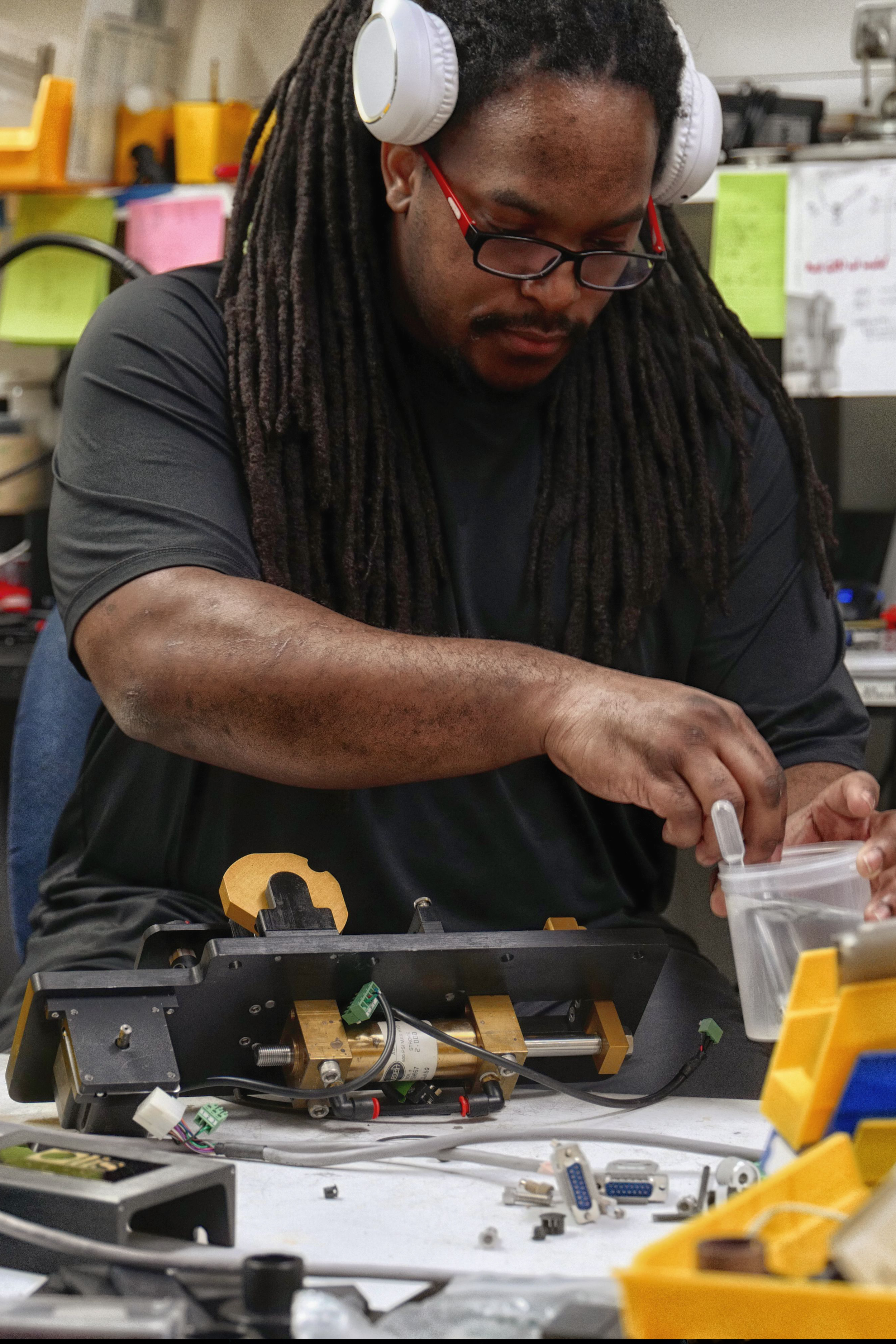The 8-Minute Rule for Uv/vis/nir
The 8-Minute Rule for Uv/vis/nir
Blog Article
The Best Guide To Uv/vis
Table of ContentsUnknown Facts About SpectrophotometersLittle Known Facts About Circularly Polarized Luminescence.Facts About Spectrophotometers RevealedThe Main Principles Of Circular Dichroism What Does Circularly Polarized Luminescence Do?

Although spectrophotometry is most commonly used to ultraviolet, noticeable, and infrared radiation, modern spectrophotometers can interrogate broad swaths of the electromagnetic spectrum, consisting of x-ray, ultraviolet, visible, infrared, and/or microwave wavelengths. Spectrophotometry is a tool that hinges on the quantitative analysis of particles depending upon just how much light is absorbed by colored compounds.
All About Circular Dichroism
A spectrophotometer is typically used for the measurement of transmittance or reflectance of solutions, transparent or nontransparent solids, such as sleek glass, or gases. Although many biochemicals are colored, as in, they absorb visible light and for that reason can be determined by colorimetric treatments, even colorless biochemicals can frequently be transformed to colored compounds suitable for chromogenic color-forming reactions to yield compounds ideal for colorimetric analysis.: 65 Nevertheless, they can likewise be created to determine the diffusivity on any of the listed light ranges that generally cover around 2002500 nm utilizing different controls and calibrations.
An example of an experiment in which spectrophotometry is used is the decision of the stability constant of a service. A particular chain reaction within an option might happen in a forward and reverse instructions, where reactants form products and items break down into reactants. At some time, this chemical reaction will reach a point of balance called a stability point.
Uv/vis/nir Can Be Fun For Anyone
The amount of light that travels through the option is a sign of the concentration of specific chemicals that do not permit light to travel through. The absorption of light is because of the interaction of light with the electronic and vibrational modes of molecules. Each kind of particle has a specific set of energy levels associated with the makeup of its chemical bonds and nuclei and hence will absorb light of specific wavelengths, or energies, leading to unique spectral residential or commercial properties.
Making use of spectrophotometers spans different scientific fields, such as physics, materials science, chemistry, biochemistry. circular dichroism, chemical engineering, and molecular biology. They are commonly utilized in many markets consisting of semiconductors, laser and optical production, printing and forensic assessment, as well as in labs for the study of chemical compounds. Spectrophotometry is often utilized in measurements of enzyme activities, determinations of protein concentrations, determinations of enzymatic kinetic constants, and measurements of ligand binding reactions.: 65 Ultimately, a spectrophotometer has the ability to figure out, depending upon the control or calibration, what substances are present in a target and precisely just how much through calculations of observed wavelengths.
This would come as an option to the formerly produced spectrophotometers which were unable to soak up the ultraviolet correctly.
The Circularly Polarized Luminescence Statements
It would be discovered that this did not offer satisfying outcomes, therefore in Model B, there was a shift from a glass to a quartz prism which enabled better absorbance results - UV/Vis/NIR (http://www.cartapacio.edu.ar/ojs/index.php/iyd/comment/view/1414/0/30215). From there, Model C was born with an adjustment to the wavelength resolution which ended up having 3 units of it produced
It irradiates the sample with polychromatic light which the sample absorbs depending on its homes. Then it is transmitted back by grating the photodiode variety which discovers the wavelength region of the spectrum. Ever since, the development and application of spectrophotometry gadgets has increased tremendously and has become one of the most ingenious instruments of our time.

The smart Trick of Spectrophotometers That Nobody is Talking About
The grating can either be movable or fixed.
In such systems, the grating is repaired and the intensity of each wavelength of light is determined by a different detector in the range. When making transmission measurements, the spectrophotometer quantitatively compares the fraction of light that passes through a referral solution and a test solution, then digitally compares the intensities of the 2 signals and calculates the percentage of transmission of the sample compared to the referral requirement.

Report this page